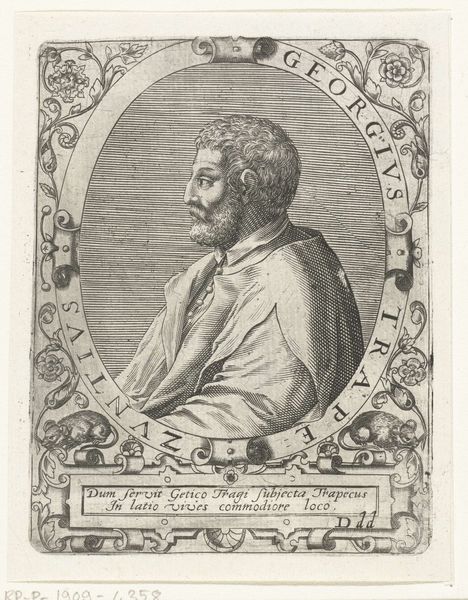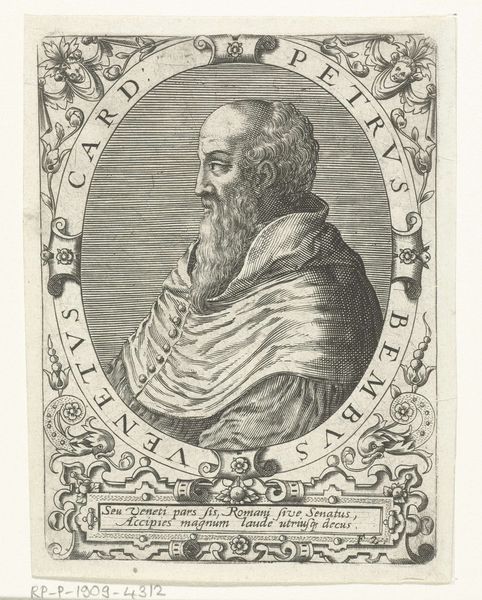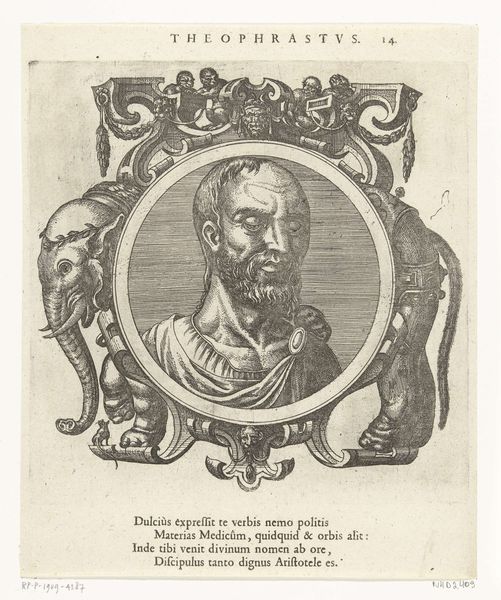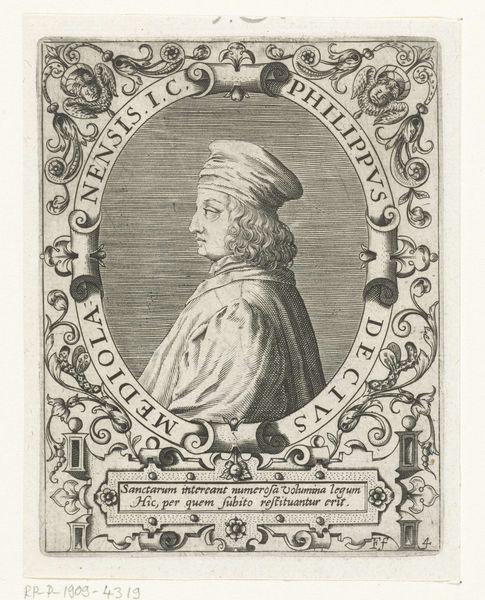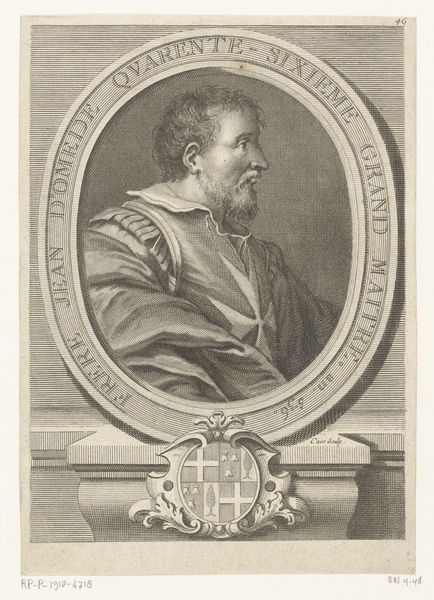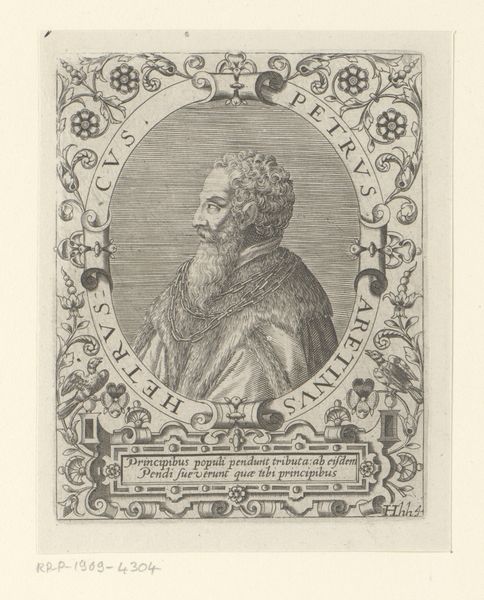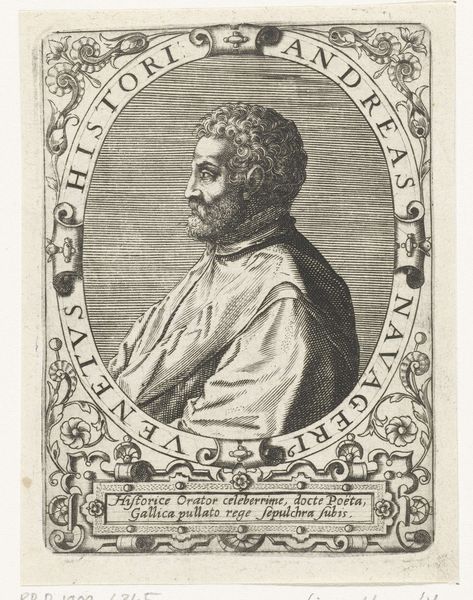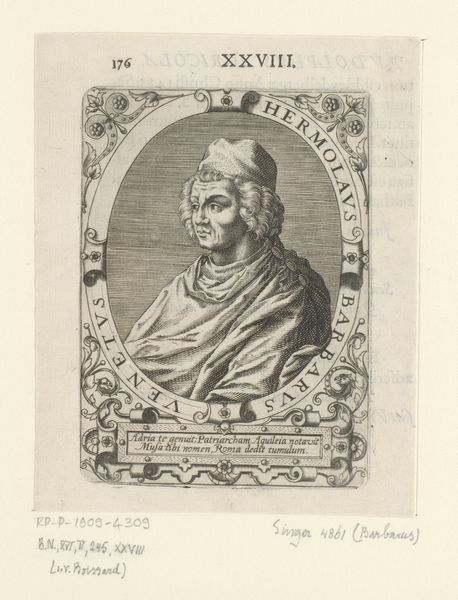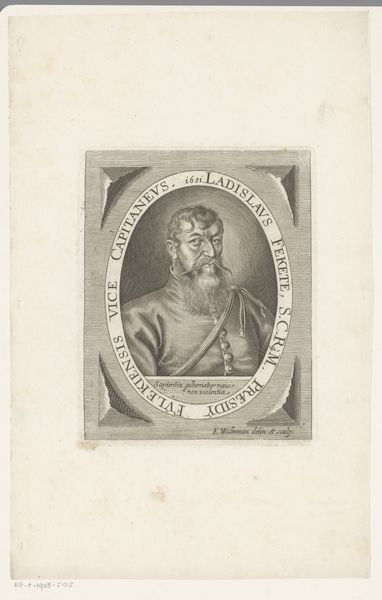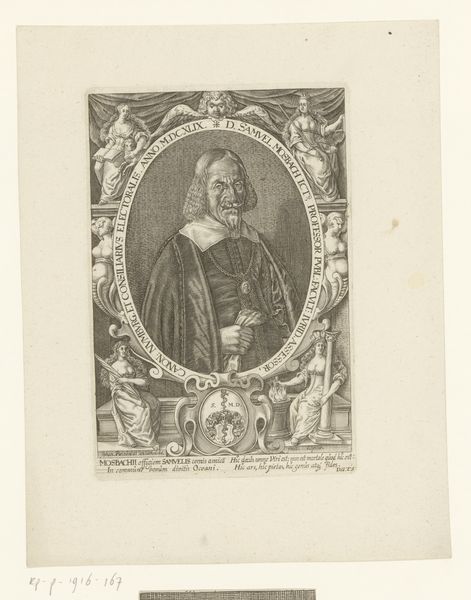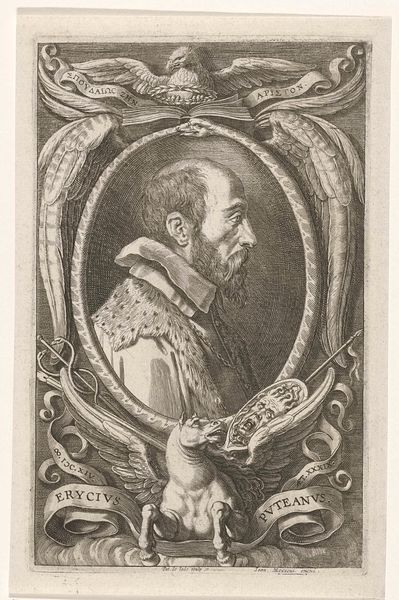
print, engraving
#
baroque
# print
#
pen illustration
#
pencil sketch
#
old engraving style
#
ink drawing experimentation
#
geometric
#
line
#
history-painting
#
engraving
Dimensions: height 140 mm, width 100 mm
Copyright: Rijks Museum: Open Domain
Editor: This is Theodor de Bry's "Portret van Jean Antoine de Baïf," an engraving from around 1597-1599, housed in the Rijksmuseum. The detail is incredible for a print, almost like a meticulous drawing. I find the lettering surrounding the portrait very interesting. What stands out to you in this piece? Curator: The lettering, precisely "POETA IANVS ANTONIVS BAIFIVS," literally Poet Jean Antoine de Baïf, reminds us that prints like this functioned within a very specific system of knowledge and patronage. Baïf was a prominent poet and member of the Académie de Poésie et de Musique. Prints like this weren't just portraits, they were a form of intellectual currency, circulating images and ideas among a specific elite. What does the visual framing around the portrait suggest to you? Editor: The frame with the flowers and owl hints at a sense of scholarship and maybe even wisdom? Was it common to place historical figures inside such frames? Curator: Exactly. The frame isn’t merely decorative. These were stock frames produced in workshops that imparted meaning, connecting the sitter to established symbolic languages and intellectual traditions. It speaks volumes about the social position of both the subject and the intended audience for this print. It's also crucial to remember how the market shaped this. Did wealthy patrons like Baïf commission such works? Or was de Bry responding to existing interest? The economic drivers matter. Editor: That's a perspective I hadn't considered, the active role of both artist and patron. So, looking beyond the face and seeing how societal structures of knowledge influenced its creation and its consumption? Curator: Precisely. Art isn’t created in a vacuum, it reflects – and reinforces – power dynamics. Considering these historical forces helps us understand the image's enduring appeal. Editor: It gives me a new appreciation for prints as more than just copies but really as products embedded in a rich historical and social network. Curator: And, indeed, part of that network endures, because here we are today still engaging with Baïf and de Bry's collaboration, centuries later.
Comments
No comments
Be the first to comment and join the conversation on the ultimate creative platform.
